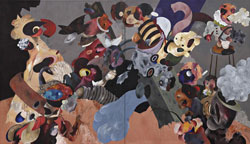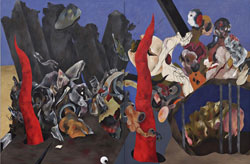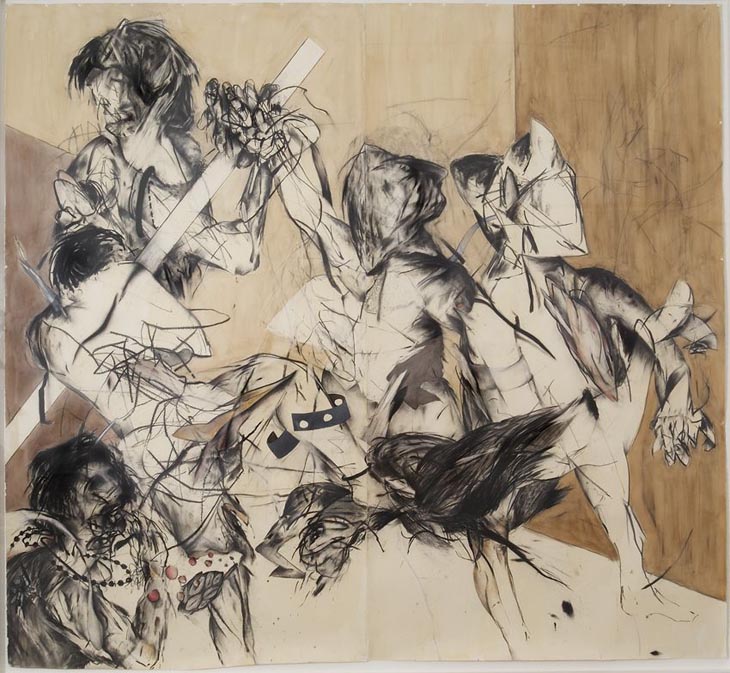
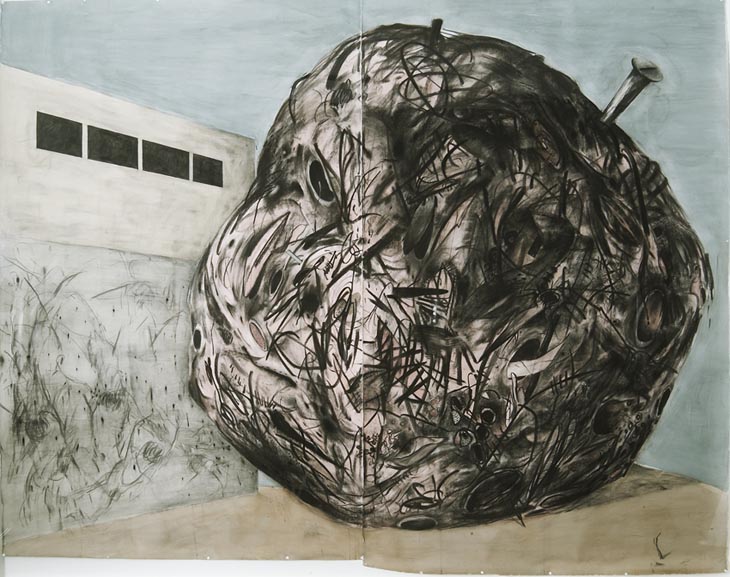


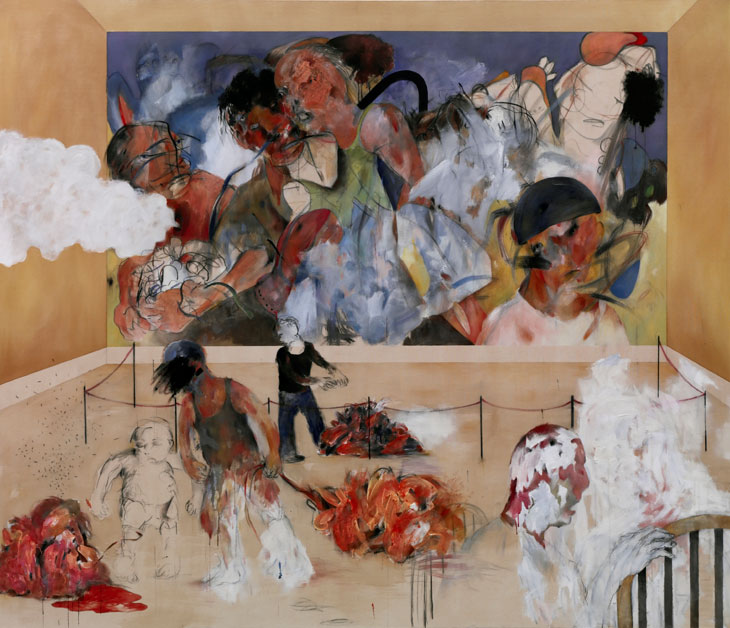
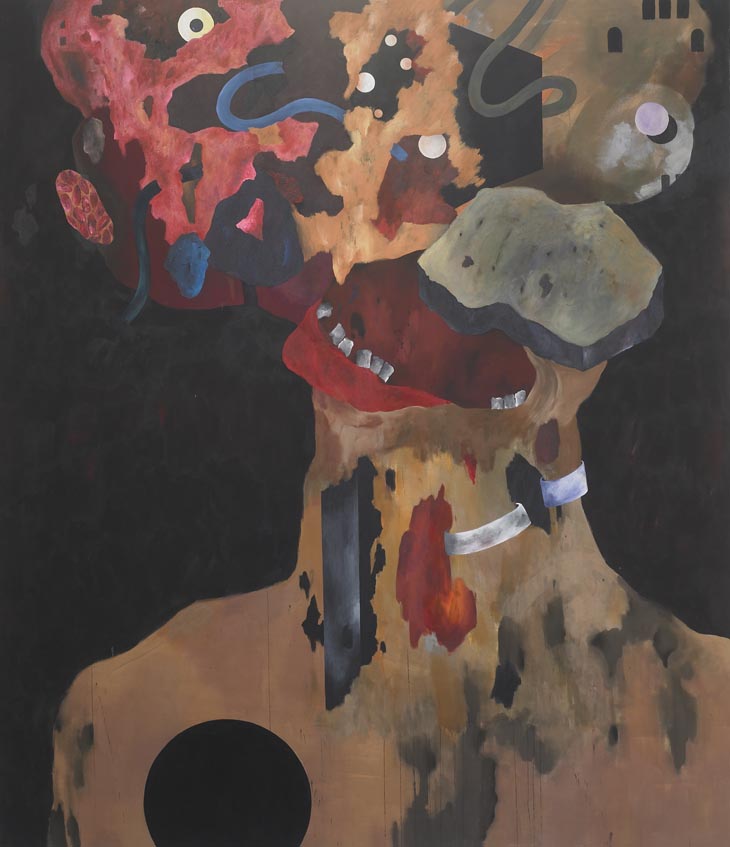
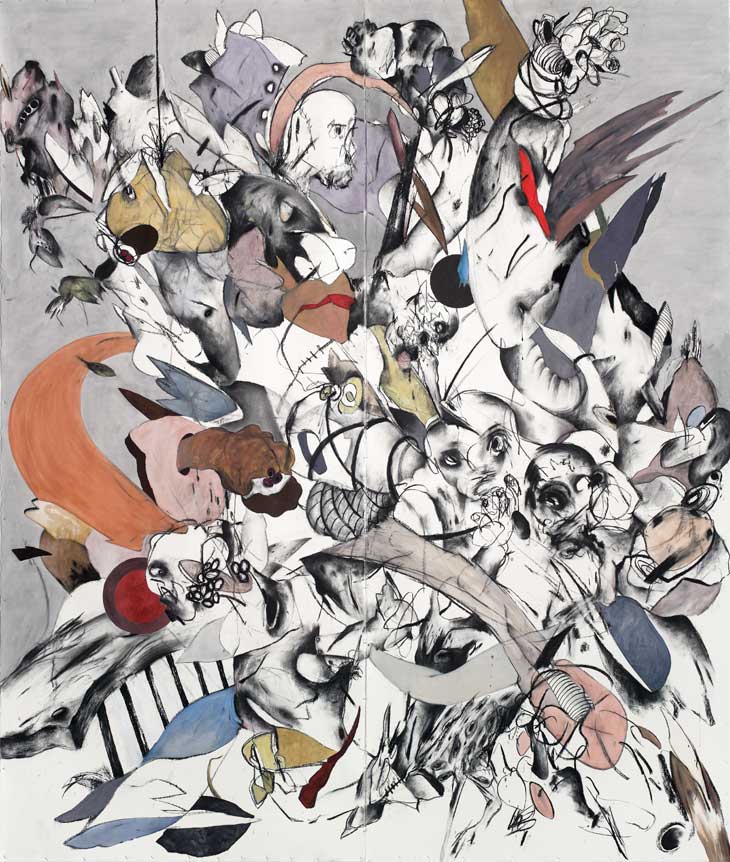
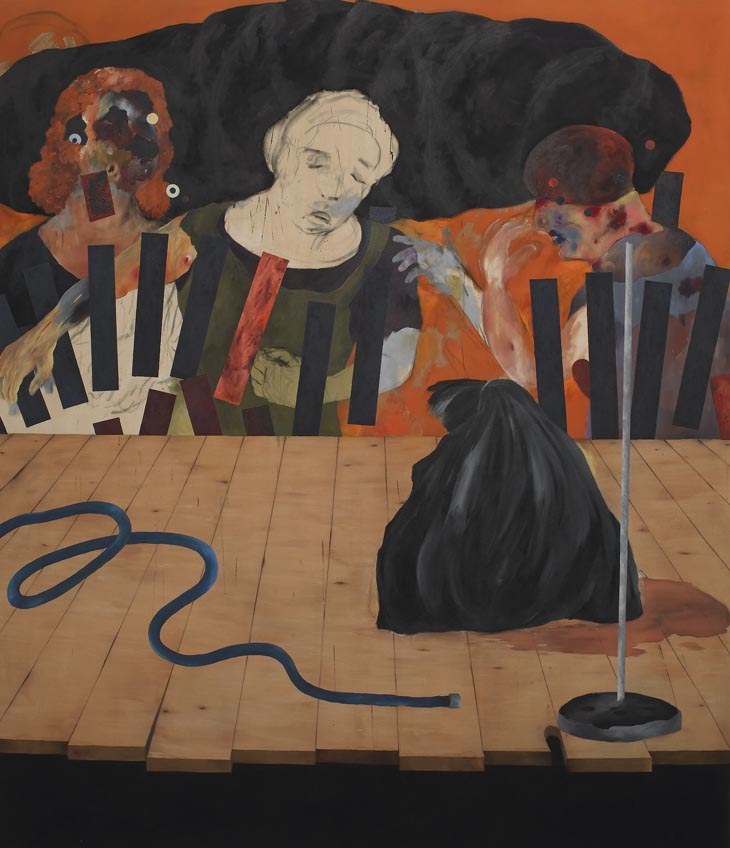
Ahmed Alsoudani
Alsoudani executes his works with a raw physicality, using materials such as paint and charcoal in an unorthodox way, often painting over drawing and vice versa. You No Longer Have Hands is spread over two large pieces of paper, the seam down the middle operating literally as a divide. Like many of Alsoudani’s images, there are no people in this work, rather the concepts of violence are presented as something too large and abstract to comprehend. Instead a graffiti strewn wall provides a hint of humanity against a raging black mass, torrential, abject and bereft.
"The falling statue of a despot in the centre of Baghdad I recalls the toppling of the statue of Saddam. The rooster-like figure symbolizes America. Here the rooster is not only a figure of control but is injured as well and constrained. The basket of eggs to the left side of its neck represents ideas - unhatched ideas in this case; an armory of fragile potential. Alsoudani’s fascination with molecules and cellular references are apparent in the central egg-shaped object in the center of the rooster’s belly. The flood bursting through on the bottom center of the canvas carries Biblical associations and references the fractured nature of daily life in Baghdad – nothing works, pipes burst, the city is tacked together, evoked by the large nails depicted in different parts of the canvas. A figure on the upper right of the canvas bursts forth in a flourish of pageantry, representing the new Iraqi government, sprung forth from the chaos, compromised, bandaged and standing precariously on a teetering stool." Robert Goff "Baghdad II depicts a "typical" Baghdad scene: on the left side of the canvas a car has crashed into an American-built security wall - another suicide bombing attempt or an act of pure desperation. Stylized licks of red flame come up from the ground, an eyeball has rolled to the center of the painting on the bottom. The eyeball plays a role in terms of content and form but also alludes to Lebanese poet Abbas Baythoon. On the lower right hand side of the painting a head lies behind bars – this is a reference to a statue in Baghdad, which here Alsoudani has decapitated and, ironically, brought to life as an imprisoned figure. One way to read this is that under Saddam’s dictatorship art was constricted and imprisoned and this idea of censorship is continually evoked through a layered approach in this work. The female figure in the center right side of the painting is deliberately drawn in as opposed to painted, a martyr-figure both carrying and giving birth to change." Robert Goff Alsoudani’s Untitled is barely recognisable as a portrait. Mixing charcoal with paint, the surface evolves as a dirty corporeal mass, as pure colours become tinged by sooty dust and paint drips down the canvas in contaminated streams. Describing what might be a head, Alsoudani offers up an anguished abstraction combining organic textures with geometric forms. Rendering carnage with an almost cartoon efficacy, Alsoudani summates the base instinct of destruction as a volume of fleshy fields punctuated by industrial rubble; hard-edged circles and arcs lend an absurd consumerist familiarity suggesting windows and bullet holes in the cold pictograph motifs. Alsoudani’s Untitled mesmerizes with the power and chaos of an explosion, combining artistic references with combustive force. Reminiscent of cubist dynamics, Alsoudani approaches his theme of war from every angle, broaching the incomprehensibility of combat and its repercussions through his fragmented and turbulent composition. Drawn in charcoal and pastel Alsoudani’s gestures convey raw passion and intensity with a rarefied elegance, his subtle shading and ephemeral acrylic washes simultaneously evoking the detailed etching in Goya’s Disasters of War and the hyper-violent media graphics of Manga illustrations. Alsoudani negotiates these terrains with unwavering authority, responding to current events with commanding hindsight to develop contemporary history painting that’s both high-impact and enduring.

